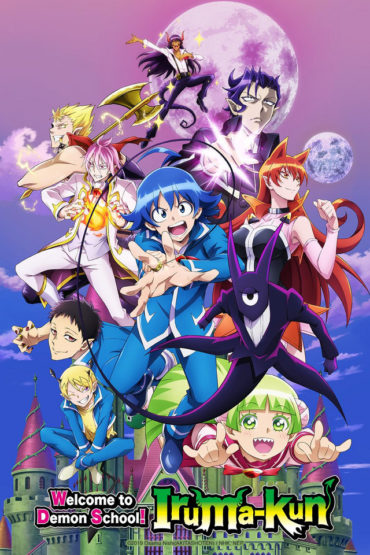Summer Overview: Returning/Continuing Series 2021 – What We’ve Been Watching
If the Summer 2021 new series have been something of a mixed bag, what about the returning/continuing series? Miss Kobayashi’s Dragon Maid, and My Next Life as a Villainess were much loved and praised when they debuted, so both series have a lot to live up to second time around. Join our writers as they take a look at the latest episodes of some popular returning titles (and please look forward to our thoughts on the new series in the next article)!
Demelza

This season saw the return of plenty of fan favourites, but the one I was particularly excited for was My Next Life as a Villainess: All Routes Lead to Doom! X which is second season of the comedy series. Season 1 last year saw viewers fall in love with the protagonist Catarina Claes, who found herself reincarnated into an otome game as the villainess!
Season 2 picks up with her having managed to avoid all the Bad Ends of the video game and now she and her friends are celebrating their graduation, but nothing is ever simple in this series and it’s not long before Catarina finds herself wrapped up in a kidnapping and worse. As far as second seasons go, it’s filled with everything we enjoyed from the initial TV anime and I had a lot of fun watching it. I also appreciate how the show continues to add in anime-only content in-between adapting volumes of the light novels. For example: two of the books are kidnapping storylines back-to-back, but in the anime, instead of adapting them in the same order, the series adds some original content and rearranges things slightly. It leaves the final product as a more attractive way of experiencing the story, which is something you so rarely get to say about anime adaptations lately (especially if the source is a light novel!).
If you enjoyed the first season of the show then you’ll certainly enjoy this one. It doesn’t do anything particularly better or worse, it’s just more of the same which I think is perfectly fine since that seems to be what the audience wants (myself included).
The season concluded with the announcement of a film being in the works, which means we won’t be left waiting long for more adventures in this world. Personally, I’m hoping instead of adapting from the books, the team at Silver Link choose to create an original story since they’ve proved that they’re more than capable of doing so for the TV series. But we’ll have to wait and see what happens there!
My Next Life as a Villainess: All Routes Lead to Doom! X is available on Crunchyroll
Onosume
There weren’t that many big sequels to choose from this season; the ones I picked up were all generally good, although I did have two stand-out favourites.

Magia Record, the adaptation of that Puella Magi Madoka Magica spinoff mobile game, seems to have a tendency of jumping out at us from nowhere, with its second season, “The Eve of Awakening”, suddenly appearing after being absent at the event earlier in the year which announced the Rebellion sequel movie. Taking the approach of splitting things (probably for production reasons), we’ve had the first 8 episodes of the conclusion to the game’s first main story, and honestly, I really enjoyed what this had going for it.
The main objectives for this second season of the show were to hook it more into the original series while setting up for the big conclusion we’ll get in Season 3, and it at least delivered on one of those counts.
Despite struggling at times to keep up with the grand ambition of its story, I think what they’ve done in building on the original lore and changing the state of play in terms of how the magical girls interact with both the witches and the Uwasa is great, and it makes them both a real threat to our main cast as they are very much dealing with emotional human beings this time around, rather than the logical and emotionless Incubators. Meanwhile it does a great job of picking up from the grand- and in some ways ambiguous – ending from the first season, as we see where all of our magical girls have ended up, and for sure there’s a lot of mess there that Yachiyo has to clear up, including rescuing Iroha from the depths of her out of control Doppel.
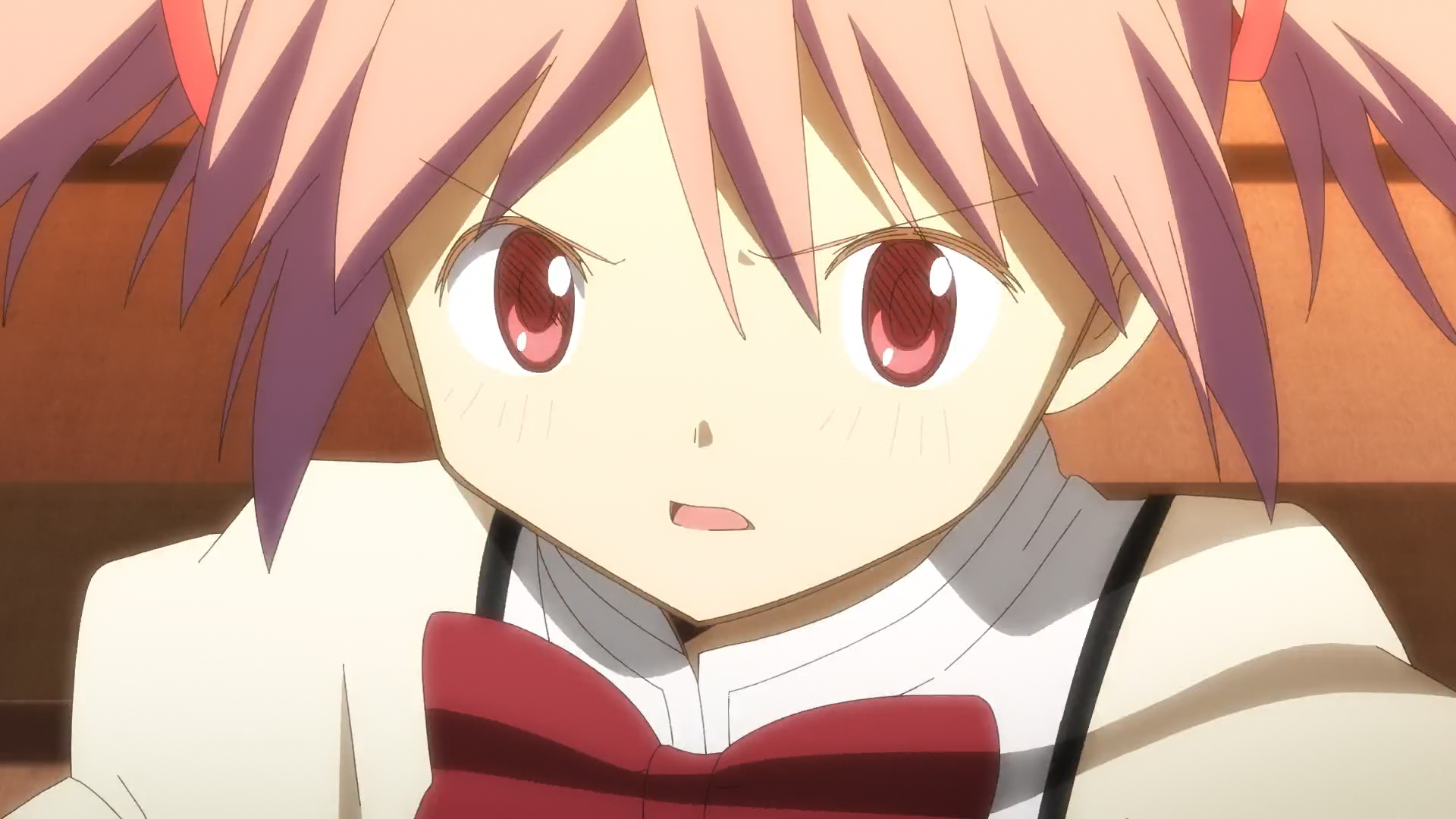
On the other hand, I think trying to bring in the original characters was a bit of a wasted opportunity as they don’t really get to do much. As much as it’s nice seeing them again, particularly with a new spin on a familiar episode, they were clearly just there for fanservice sake, as their overall input in the final battle is quite minimal. They do help out Iroha and the gang, yes, but there are certainly ways they could have resolved the situation with them. They also don’t help the fact that it’s still hard to keep track of who is who, with the series featuring so many different characters from a mobile game with gacha mechanics – I honestly couldn’t tell you the names of most of them.
It’s still looks really impressive though, and fans of Gekidan Inu Curry’s art gets plenty more to love here, especially with more creepy witches and Uwasa being added to the franchise’s repertoire. It continues to nail the soundtrack too, with new arrangements of some pieces from the original series being a particular delight.
While we’re not quite done yet, this more focused second season with its fascinating additions to the franchise lore have certainly established it as one of the better spin-offs within the Madoka universe and I can’t wait to see how it concludes in the winter season.
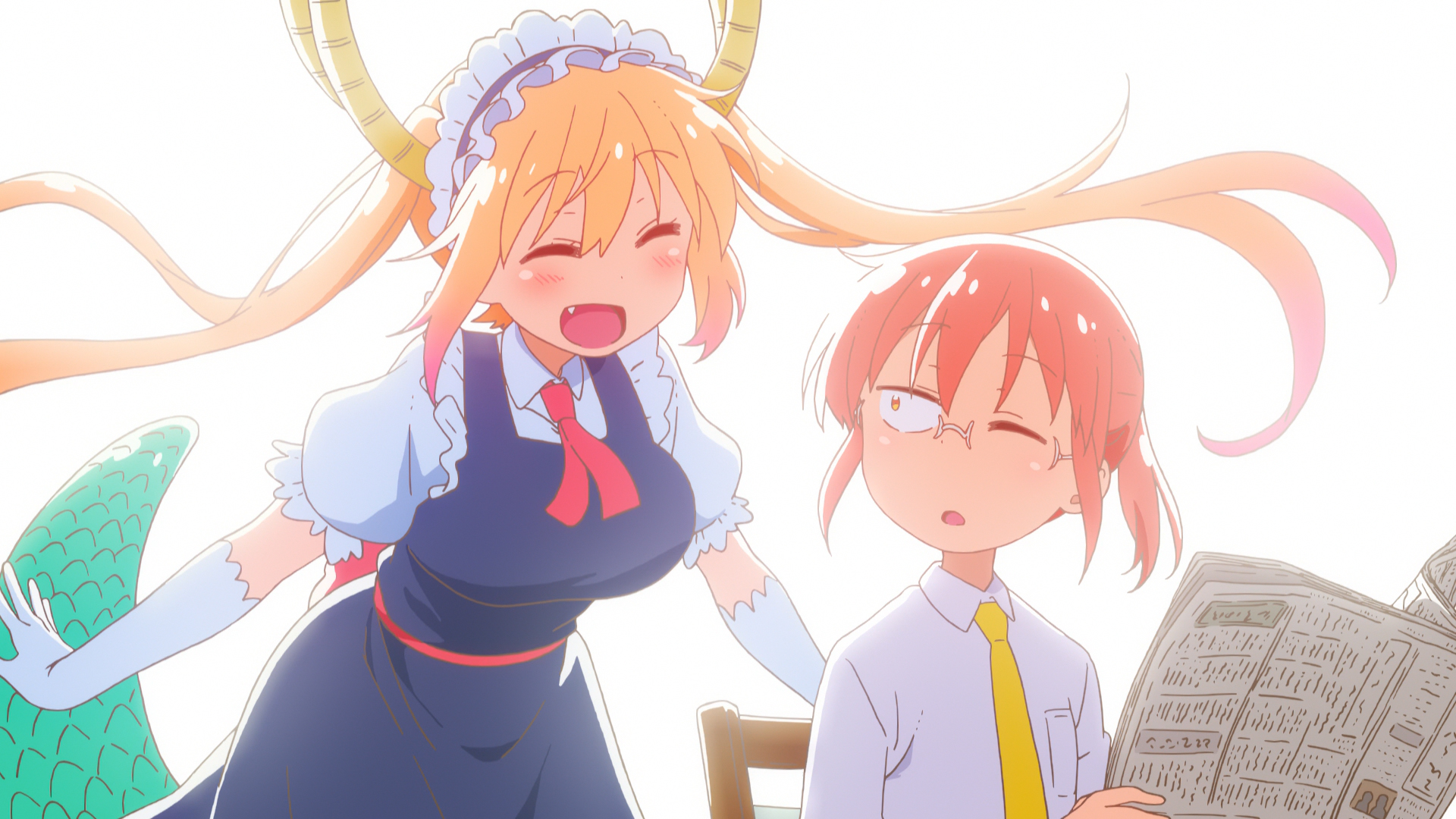
Miss Kobayashi’s Dragon Maid S saw our favourite maid uniform-toting dragon return to our screens, which ultimately proved to be more of the same, but that’s certainly not a bad thing for a series that is as utterly charming and funny as this.
There was some initial trepidation among fans on how they were going to introduce new dragon Ilulu, but I think it was mostly needless worrying. While the size of her chest is a bit too extravagant and her initial interactions with Kobayashi were rather mean, she eventually just falls into the rest of the cast as she quickly adapts to living in the human world. With her ability to get on well with and understand kids, as well as her interactions with the sweet shop owner’s son, I found her pretty sweet. Maybe the whole thing around turning Kobayashi into a guy was a bit much, but it was probably handled as well as it could have been (I can certainly see how it could have been a lot worse). At the end of the day though it’s a 5-minute segment so it’s easy enough to skip over if it does make you uncomfortable.
The rest of the series though is pretty much as you’d expect, with plenty of hilarious moments for the entire cast. Kanna continues to be my firm favourite as she continues to get into a lot of fun adventures, from exploring to the end of the river, to running away to New York for a day. Meanwhile you start getting expanded backstories for characters like Tohru and Elma which fit in nicely to the overall story.

Kyoto Animation’s work on the show is still an absolute treat, and it’s good to see them getting stuck into their first TV series since the dreadful arson attack in 2019, with Yasuhiro Takemoto, the director of the original series, credited posthumously as “series director” despite directorial duties passing to Tatsuya Ishihara, which is a nice touch to honour his memory. I also love the opening animation, although as good as the song is, I think they should have had the voice actors singing it rather than fhána as it sure felt like it should have been that way.
Anyway, if you loved the first season of Miss Kobayashi’s Dragon Maid then you’re surely going to love the second, as pretty much like Demelza’s comments on My Next Life as a Villainess, it is largely more of the same, but delves deeper into some of its characters. All in all, a solid showing for the series.
Magia Record: Puella Magi Madoka Magica Side Story – The Eve of Awakening is available on Funimation, and also on Crunchyroll and HIDIVE but with a week’s delay. Miss Kobayashi’s Dragon Maid S is available on Crunchyroll.
Josh A. Stevens
For the past few years, you’d have been hard-pressed to find an anime fan who hadn’t heard of My Hero Academia, Weekly Shonen JUMP’s pre-Demon Slayer darling that blew up right as the magazine and world alike were looking for a Naruto replacement (the less said about Boruto the better), and the world was at the height of superhero hype with Marvel Studios’ Infinity Saga nearing its climax. Despite its widespread popularity though, I’ve regularly thought of My Hero Academia as just “being there”. I still keep up with each new season, but I’ve long stopped feeling excited when a new one is announced. Maybe it’s simply because they’re a given at this point, or because despite its occasional strong moments, My Hero Academia often just feels like a cookie cutter shonen (heck, the first half of this season was another tournament arc). However, if My Hero Academia Season 5 Part 2 has proven anything, it’s that the series can be spectacular when it actually has a story to tell.
This latest instalment of My Hero Academia is split into two distinctive story arcs. The first follows Deku, Bakugo and Todoroki as they join Endeavor’s hero agency on a work study placement, while the second turns its attention to Tomura Shigaraki and the League of Villains. Both of these stories shine a darker light on the series, leading to its most morally complex and fascinating season so far.
If you’re already this deep into the series, then you’ll already know that Shoto Todoroki’s relationship with his father, the recently appointed Number 1 Hero Endeavor… isn’t great. Endeavor’s obsession with having a child who could become the greatest hero led to him being so abusive towards his family that his wife, who he only married in the first place because of the Quirk ability she could pass on, had a mental breakdown and was institutionalised. The Todoroki family is fractured, with many, including Shoto, conflicted on how to view Endeavor, who has understandably become a controversial figure for fans of the series. Indeed, some vocal corners of the community called foul when the manga originally published the arc covered by this series, with some questioning whether such an abusive character should be given anything near a “redemption arc”. However, when My Hero Academia’s most complex character is brought under the spotlight, we can see the series at its most personal, and best.
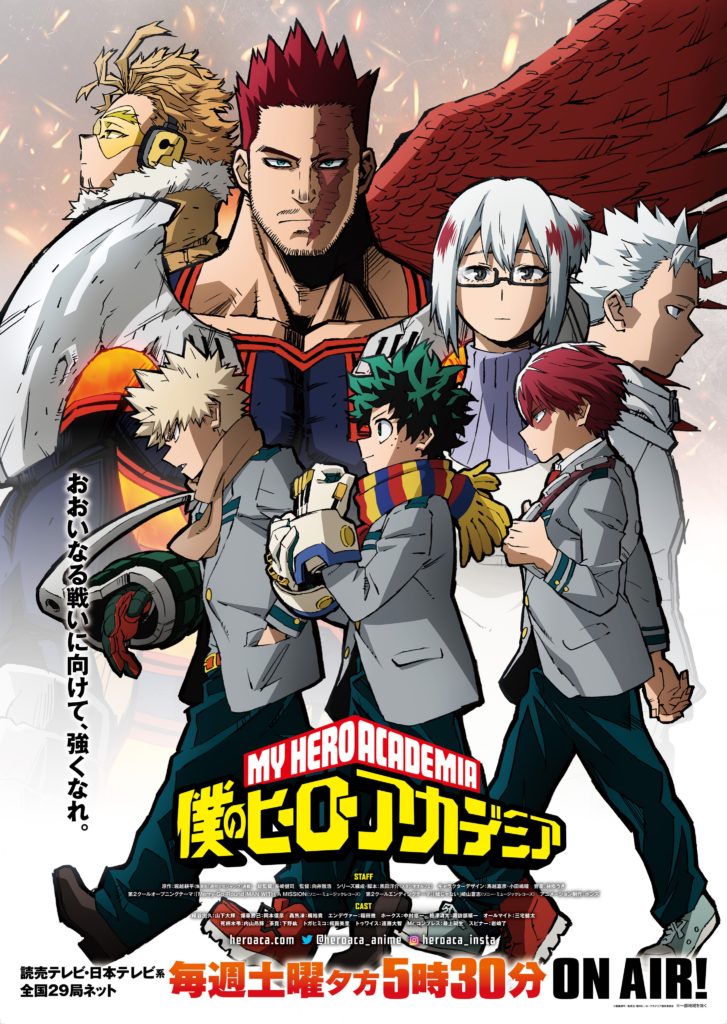
While I never really cared much for Todoroki, Endeavor’s narrative arc is my favourite of the series so far. I’m not saying he’s a good character, but his story arc and how it influences Todoroki’s is. Endeavor’s actions are indefensible and warrant more than the hatred he receives both in the fictional world and our own, but the question that kept me engaged wasn’t “Should he be redeemed?”, but “can he?” – and my reason is deeply personal. Without going into too much detail, I didn’t grow up with my father around, as a direct result of his actions. Ever since my father re-entered my life as an adult, I’ve been unsure of what relationship I could or should have with him. With Endeavor facing the impact of his past actions and reaching out to his broken family, I’m invested in finding out what answer Todoroki finds.
The “My Villain Academia” arc that followed finally gave us an origin story for Tomura Shigaraki, and it’s honestly pretty tough viewing at times. As a word of caution, this leg of My Hero Academia doesn’t pass the “Does the Dog Die?” test. Tasked with proving to All For One’s former allies that he’s a worthy successor, Shigaraki has to lead the League of Villains on a rescue mission that brings them into conflict with another villain organisation, the Meta Liberation Army, who believe that people should be able to use their Quirks unrestrained and unregulated.
For a long time, I’ve felt that the League of Villains have suffered from being too one-note. Yeah, they have quirky designs and personalities (Mr. Compress’ threads are severely underrated), but they… haven’t been more than that. However, what this arc did frighteningly well was to put me into a position where I actually understood many of the League’s key players. There’s no denying that Himiko Toga is more than a bit unhinged, but after seeing how even her parents failed to help her with the peculiar side-effects of her quirk (a thirst for and fascination with blood), I started to see how, without proper guidance, people like Toga end up falling off the societal rails. It is worth noting though, that Toga having that twisted grin even as a toddler, is definitely unsettling.
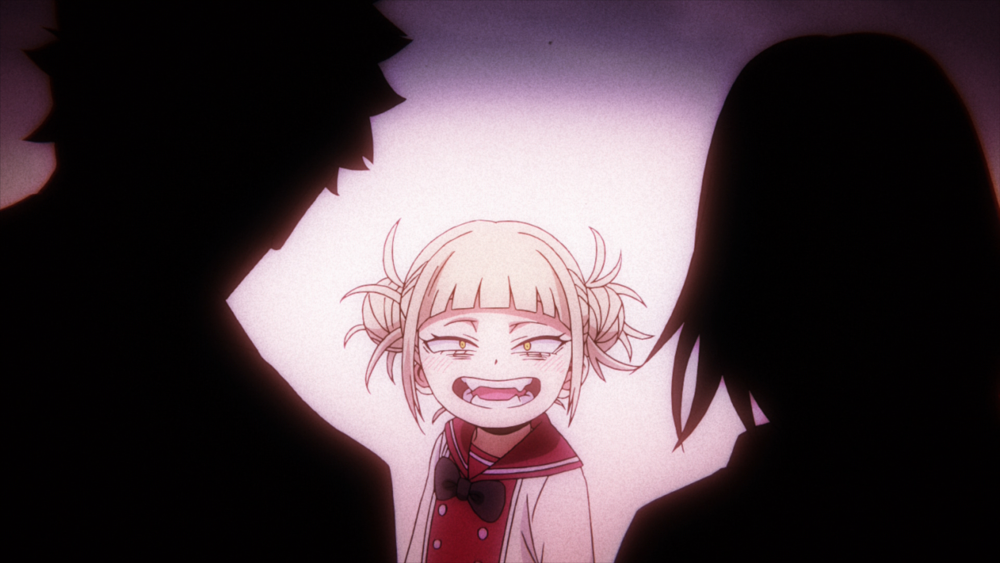
My only gripe with the “My Villain Academia” arc though, is that while Shigaraki and his crew are finally allowed the space to be fleshed out, the Meta Liberation Army that they face might be among the most forgettable villains so far. The series also spends a lot of time building anticipation for a clash that just… doesn’t come to pass. I suppose the arc does its job as a team-building exercise that finally gives another dimension to the series’ main antagonists, however.
This latest cour of My Hero Academia has fascinated me in how it has taken so many characters that we have been conditioned to dislike, and made them understandable. That’s not to say that I sympathise or condone the actions of Endeavor, Toga, or any of the series’ other questionable figures, but to make us understand and maybe even relate to indefensible characters is a terrifying feat of writing. This second part of My Hero Academia Season 5 is undoubtedly the series’ darkest yet, and its strong focus on character writing really helps it stand out from the previous cour. You might have noticed that I hardly mentioned Deku or Bakugo here, and perhaps that’s a good thing.
My Hero Academia Season 5 Part 2 is available to stream on both Funimation and Crunchyroll.
Cold Cobra
While it was a quiet summer for me (anime-wise anyway!) I’ll also throw in my two cents on the continued adventures of My Hero Academia.
The story that played out over summer was actually two different story arcs. On one hand we had our trio of protagonists in pure-hearted Midoriya, anti-hero Bakugo and emo Todoroki join the “superhero agency” of the new Number 1 hero Endeavor, Todoroki’s formally abusive father who is trying to turn over a new leaf, which is only partially working on most of his children (and not working at all in terms of Todoroki’s brother Natsu). Now a lot of this mini-arc was our lead trio learning to better control their powers and learn how to be a hero further, pretty standard stuff, but I will say Endeavor’s unique family situation does shed some interesting light on him, you’re never sure if you as a viewer should start to forgive him or not, which is quite deep for a superhero shonen show…

During this we see the Number 2 hero Hawks still undercover in the League of Villains, as revealed in the previous arc, and this leads to the second story in this half of the season, often referred to as “My Villain Academia” as our lead characters become the League of Villains as they must overcome a fellow group of powered people on the wrong side, but this group (the “Meta Liberation Army”) have the advantage in numbers. It’s odd seeing such undoubtedly “evil” characters get the spotlight like this, and while their revealed backstories were often steeped in tragedy (lead antagonist Shigaraki in particular) by the end, they are very much firmly planted as the upcoming Big Bads for our actual heroes.
The animation was good throughout as well, Shigaraki’s big fight in particular was quite the sight. I hear from manga readers that this arc was rushed, which doesn’t surprise me (I’m sure studio execs were worried about not featuring the main franchise characters for weeks on end) but as an anime-only fan I found it fresh and exciting regardless. Another strong season of My Hero Academia!
My Hero Academia Season 5 Part 2 is available to stream on both Funimation and Crunchyroll.
Sarah
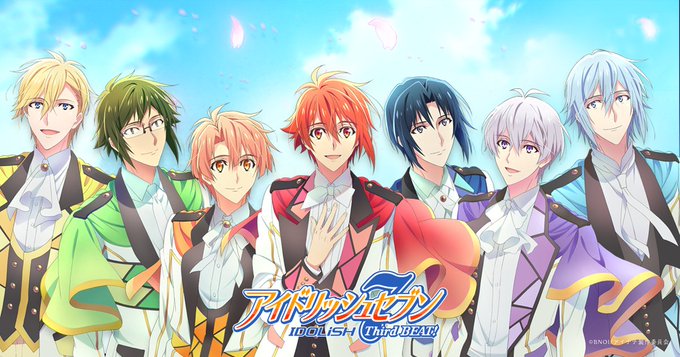
As IDOLiSH7 reaches the end of the first part of its third season with Third Beat!, it’s high time we featured the seven idol boys and their struggles to make a name for themselves in the cutthroat world of music, plus the boys in TRIGGER (established rivals) and Re:vale (friendly rivals). Why haven’t I mentioned this popular music-based series before? Because – for whatever reasons – the creative team at TROYCA insisted on using CGI whenever they showed a song being performed (and in the OPs as well) with the occasional headshot of the anime character designs spliced in. I found these sequences awkward, unconvincing and ugly (yes, I realize they’re based on the 2015 rhythm game, the origin of the series, but even so…) So when Third Beat! introduced a new OP “THE POLiCY” featuring the same 2D animation as in the series, I cheered because (a) it’s a really catchy song, sung by the I7 voice actors and (b) it’s an imaginative piece of animation that showcases the main characters effectively and naturally.
I7 has always stood out from other boy idol series (for me, anyway) because of the care given to developing its characters and their storylines and its refusal to show the world of show business through rose-tinted spectacles. There’s plenty to be written about the way the idol groups’ promoters are portrayed pandering to a young, predominantly female audience…but that’s for another kind of article. Nevertheless, it’s the backstabbing and Machiavellian plotting going on among the other agents and managers, determined to wreak havoc and ruin promising careers that makes Third Beat! such an addictive watch. Add manipulative manager Ryo Tsukumo to the mix to stir up old resentments, expose family secrets and sow seeds of discord and then delightedly watch the mayhem that ensues – and you have an addictive recipe that has kept viewers wanting to come back, week after week. Ending on a cliffhanger, I7 is due back on our screens in 2022.
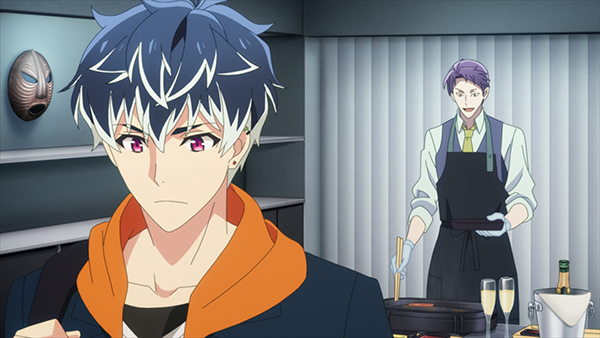
I just love Welcome to Demon School, Iruma-Kun. The twenty-one episodes in the second season have flown past, leaving viewers (me included) wanting more. This series shouldn’t work – but it does. From the moment the second season OP begins, I can feel my mood lifting. The colours are garish, the plot relies on tried and trusted fantasy/isekai tropes (magical school, mortal protagonist out of his depth in fantasy world) but the characters and the way each episode is so well crafted, artlessly blending comedy and drama, sets it apart from many of its more predictable peers.
Good-hearted Iruma (14) has been adopted by Sullivan, a high-ranking demon desperate for a grandchild to make his heir. Iruma has now spent a whole year at Babyls Demon Academy, he’s made friends (the adoring Asmodeus/Azzazz and the splendidly eccentric Clara) and caught the attention of beautiful but formidable Ameri, president of the student council. Balam, one of the teachers, now knows Iruma is human but as he’s fascinated by all kinds of different creatures, Iruma’s secret is safe. For now. Most of the recent episodes were centred on the class visit (with teachers) to the attractions at Walter Park for a day’s fun that goes horribly wrong because of an attack by the Six Fingers gang who let loose terrifying magic creatures.
And who could resist looking out for the mysterious class member Purson (not yet officially introduced – but who keeps appearing and disappearing in the OP and ED)?
And the good news is that the show has been renewed for a third season!
Welcome to Demon School, Iruma-Kun and IDOLiSH7: Third Beat! are streaming on Crunchyroll


